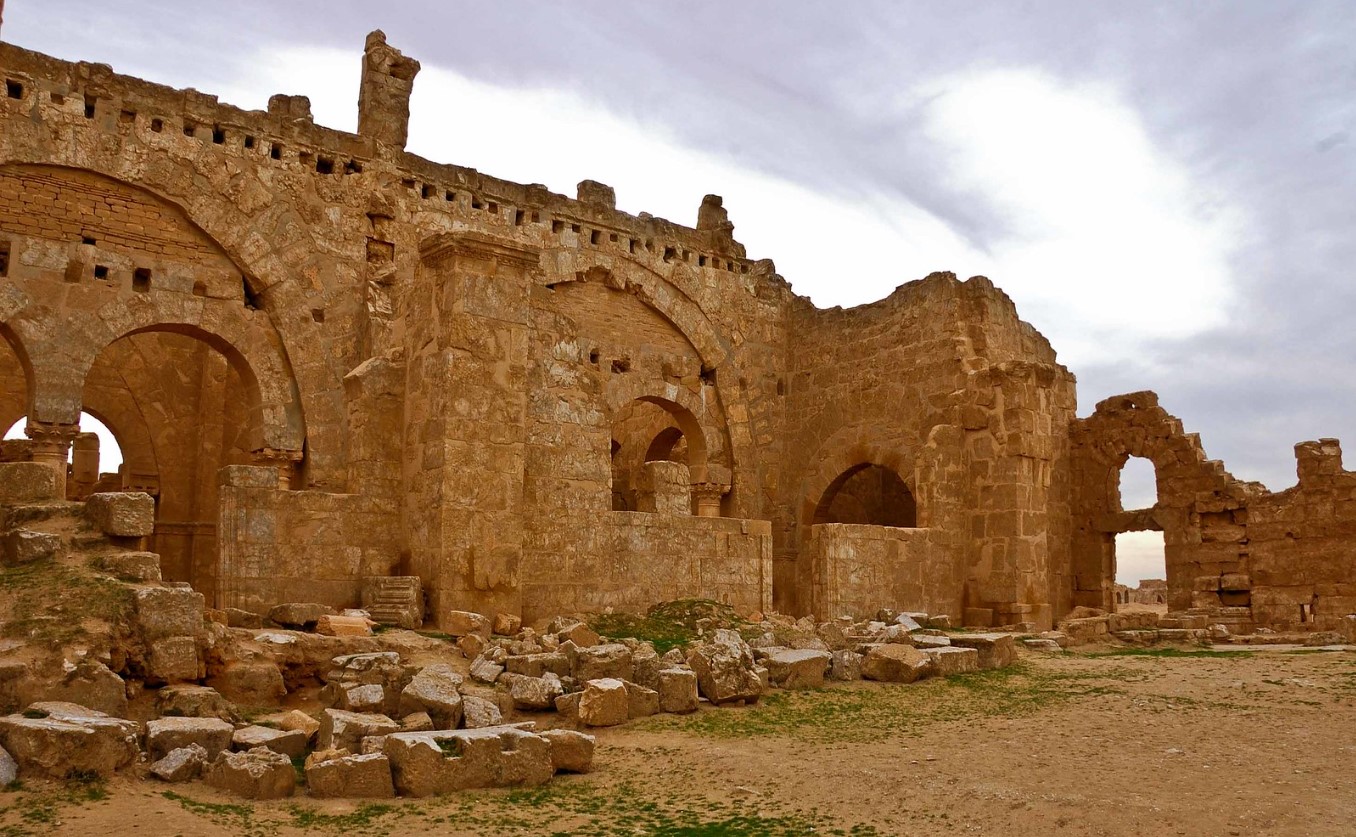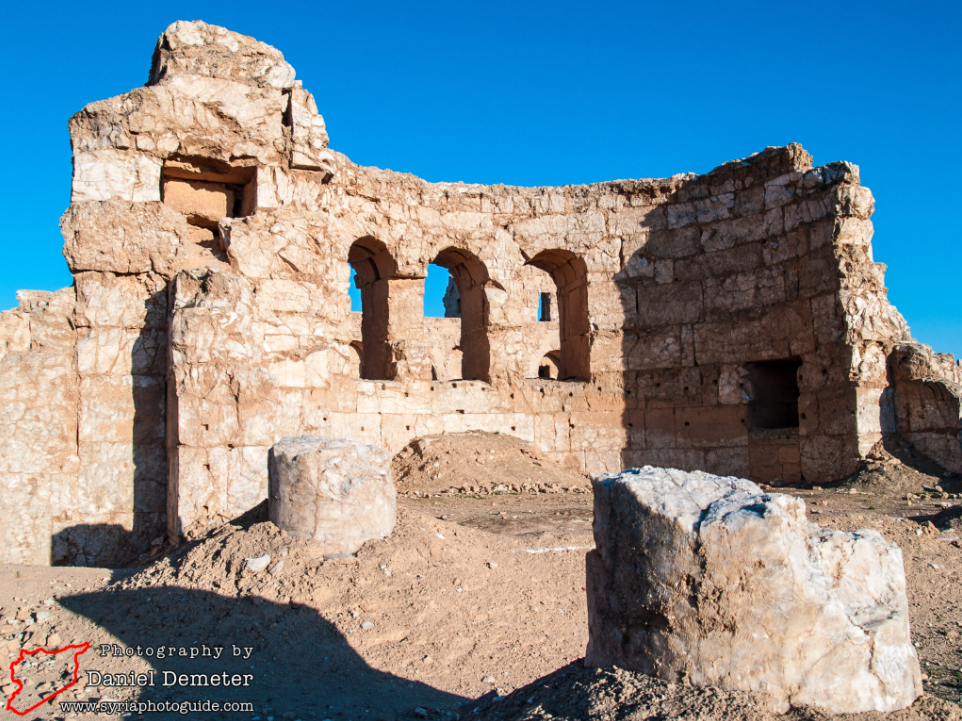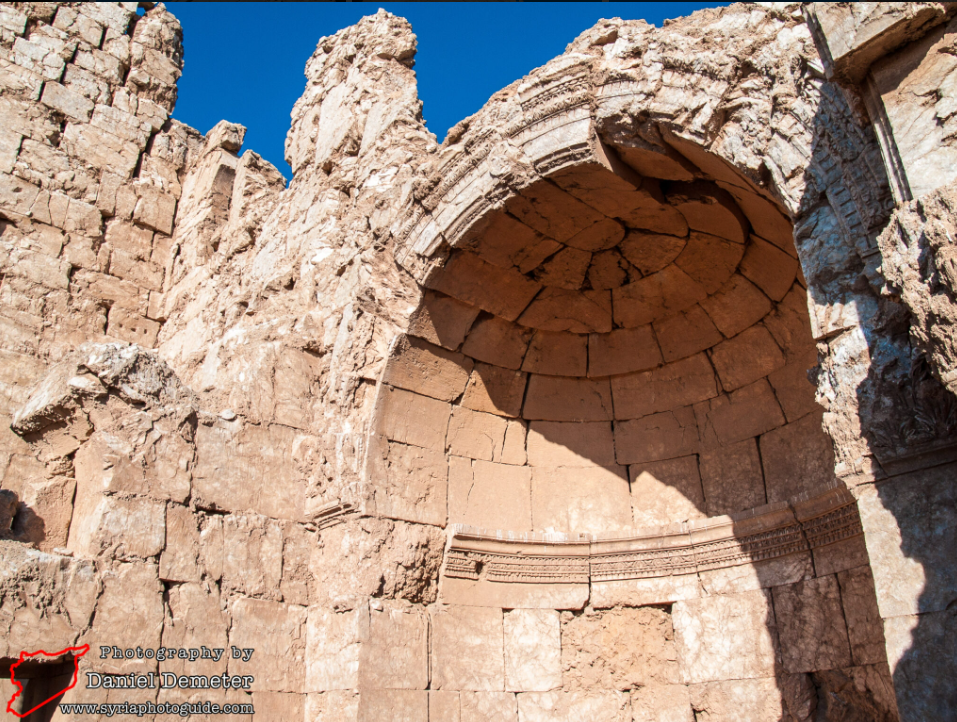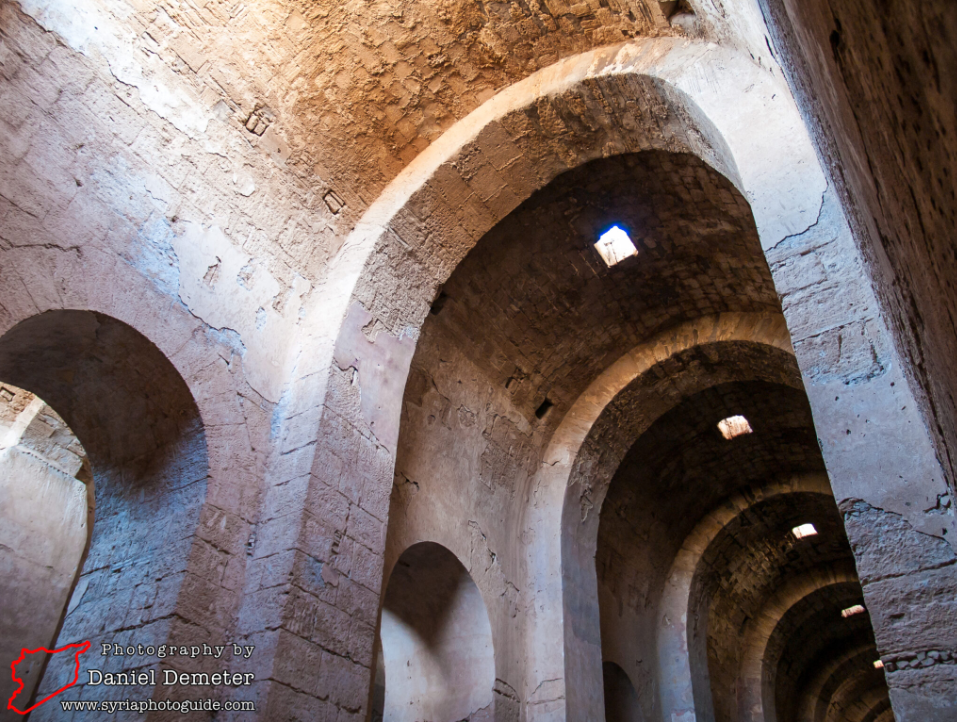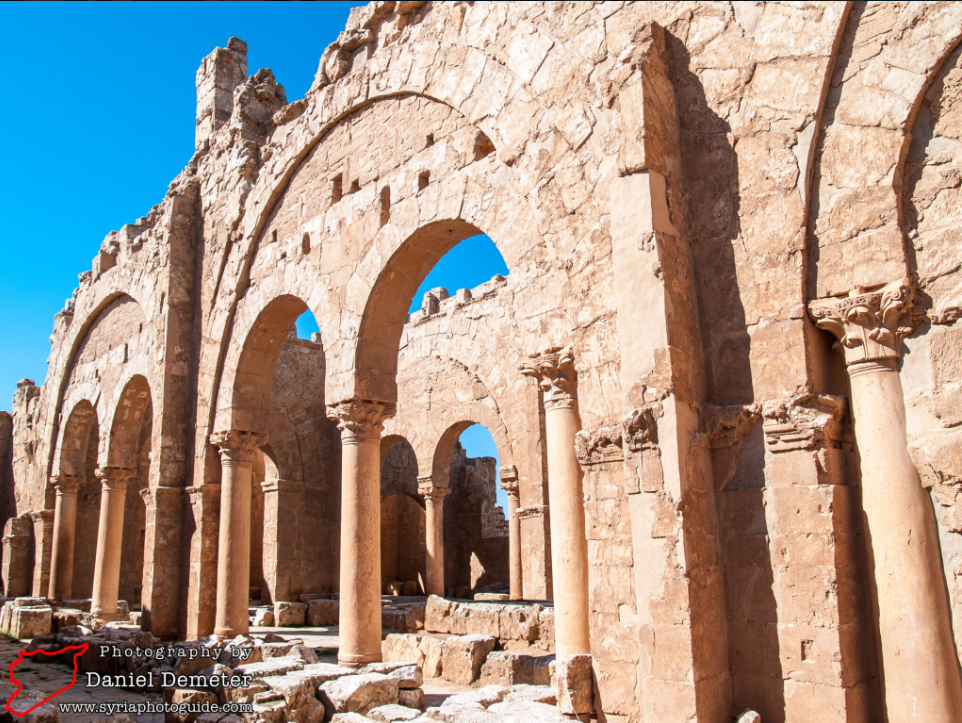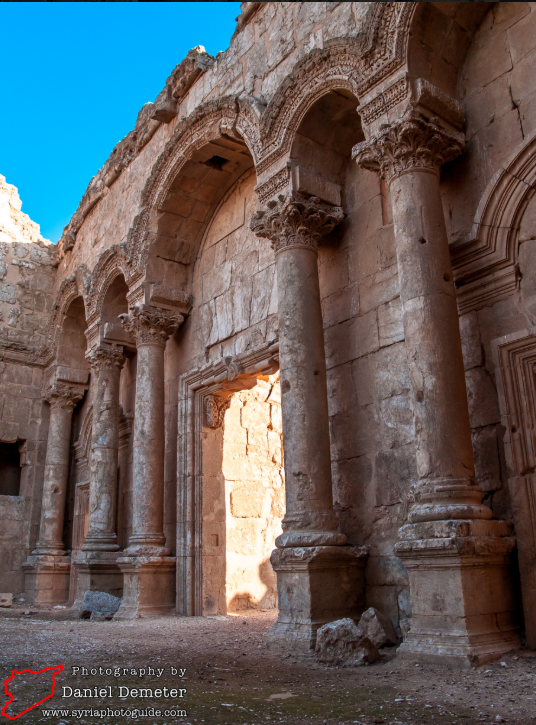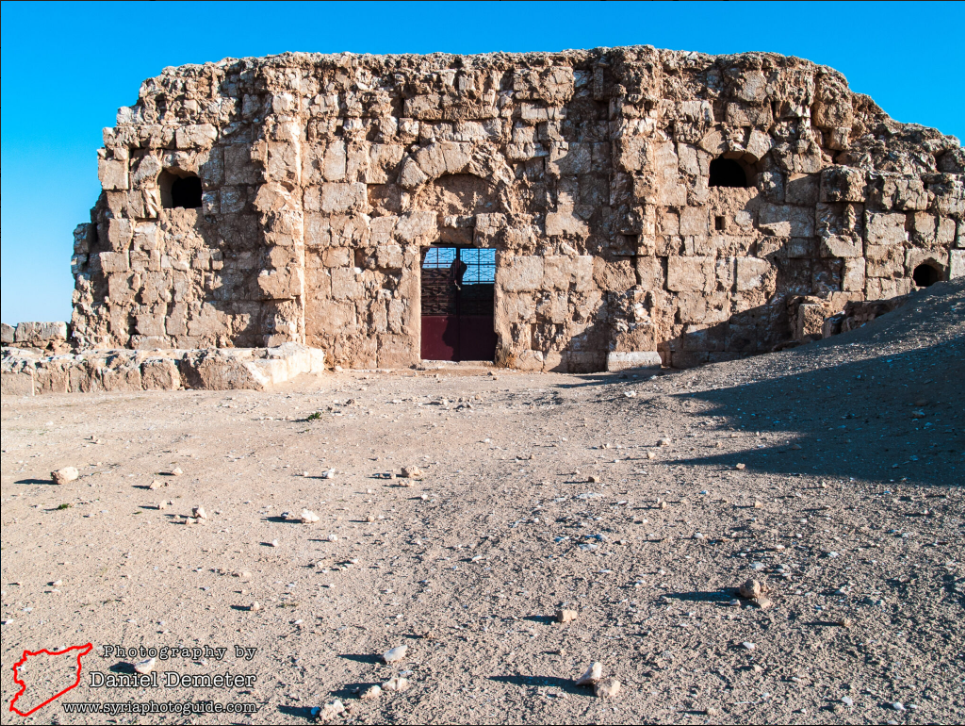Al-Rusafa (Sergiopolis)
Al-Rusafa exhibits a quintessential Roman layout: a large, walled square measuring 300 x 500 meters, situated on the firm steppe soil at the desert’s edge.
What truly distinguishes Resafa is the local pink crystalline gypsum rock used in its construction. It features three successive walls. Initially built as a Roman camp in honor of Saint Sergius, it later evolved into a city with a distinct Byzantine style.
The entrance gates are centrally located in each wall, with the northern gate serving as the primary entrance. This gate boasts three arches flanked by a square fort on each side. At its heart lies a three-aisled cathedral constructed from black basalt and featuring two marble columns. The Umayyads later added an arched gate and 12 cisterns beneath the square to provide water for pilgrims in route to Mecca.
The city had no natural springs or running water and relied entirely on these large cisterns to collect rainwater, which predominantly fell during winter and spring. Resafa was mentioned in the writings of Arab travelers and has remarkably retained its walls in a nearly complete state.

